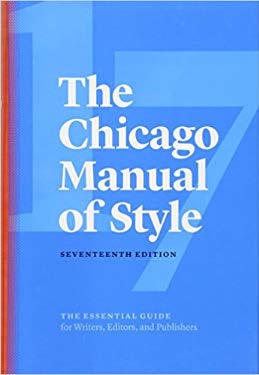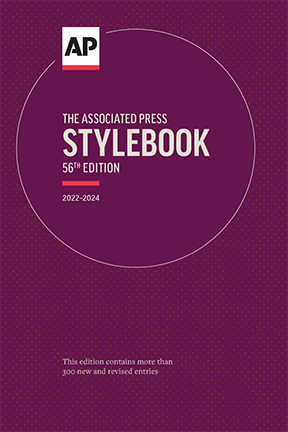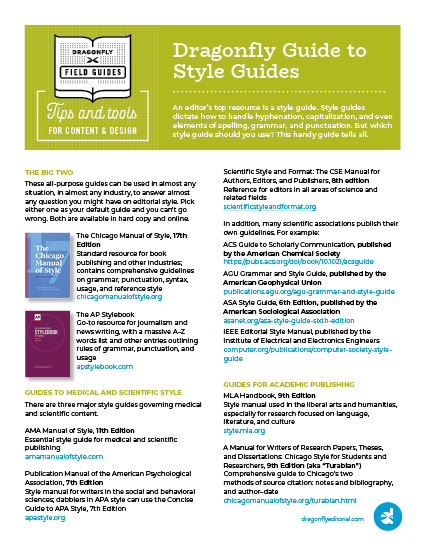An editor’s top resource is a style guide. Style guides dictate how to format elements like bulleted lists, and how to handle hyphenation, capitalization, and even certain elements of spelling, grammar, and punctuation.
But which style guide should be used for which type of material? This handy guide explains it all.
THE BIG TWO
These all-purpose guides can be used in almost any situation, in almost any industry, to answer almost any question you might have on editorial style. Pick either one as your default guide, and you can’t go wrong. Both are available in hard copy and online.

The Chicago Manual of Style, 17th Edition – Standard resource for book publishing and other industries; contains comprehensive guidelines on grammar, punctuation, syntax, usage, and reference style

The AP Stylebook – Go-to resource for journalism and news writing, with a massive A–Z words list and other entries outlining rules of grammar, punctuation, and usage
GUIDES TO MEDICAL AND SCIENTIFIC STYLE
There are three major style guides governing medical and scientific content.
- AMA Manual of Style, 11th Edition – Essential style guide for medical and scientific publishing
- Publication Manual of the American Psychological Association, 7th Edition – Style manual for writers in the social and behavioral sciences; dabblers in APA style can use the Concise Guide to APA Style, 7th Edition
- Scientific Style and Format: The CSE Manual for Authors, Editors, and Publishers, 8th edition – Reference for editors in all areas of science and related fields
In addition, many scientific associations publish their own guidelines. For example:
- ACS Guide to Scholarly Communication, published by the American Chemical Society
- AGU Grammar and Style Guide, published by the American Geophysical Union
- ASA Style Guide, 6th Edition, published by the American Sociological Association
- IEEE Editorial Style Manual, published by the Institute of Electrical and Electronics Engineers
GUIDES FOR ACADEMIC PUBLISHING
MLA Handbook, 9th Edition – Style manual used in the liberal arts and humanities, especially for research focused on language, literature, and culture
A Manual for Writers of Research Papers, Theses, and Dissertations: Chicago Style for Students and Researchers, 9th Edition (aka “Turabian”) – Comprehensive guide to Chicago’s two methods of source citation: notes and bibliography, and author–date
GUIDES TO NON-U.S. ENGLISH
Use these guides to edit English written for an Australian, Canadian, or UK audience.
The Cambridge Guide to Australian English Usage, 2nd Edition – In-depth, A–Z coverage of Australian spelling, punctuation, and word choice
Australian Government Style Manual – Style guidance from the Australian Government describes best practices in design, editing, production, and writing
Editing Canadian English, 3rd Edition – Guidance on Canadian English usage, spelling, and punctuation; Canadianisms; and working with French in an English
The Guardian and Observer Style Guide – Online A–Z listing of word usage; contains UK-specific terms, such as BBC One, garryowen, and parliamentary Labour
The Economist Style Guide, 12th Edition – Contains an A–Z words list similar to AP’s; guidance on handling UK-specific terms, such as knight, dame, and baroness; and a section outlining the differences between American and British English
BUSINESS WRITING
The Business Style Handbook: An A-to-Z Guide for Effective Writing on the Job, 2nd Edition – A–Z entries on handling terms such as consumer price index and return on investment; also includes results from a survey of Fortune 500 communications pros about effective business writing
LEGAL CITATION
These two guides govern legal citation. The Bluebook is the definitive guide; The Maroonbook, a simplified alternative.
The Bluebook: A Uniform System of Citation, 21st Edition
The Maroonbook: The University of Chicago Manual of Legal Citation
ENTERTAINMENT AND NEWS
BuzzFeed Style Guide – Online guide for entertainment and news writers, reflecting current internet and social media
GOVERNMENT-SPECIFIC GUIDES
GPO Style Manual: An Official Guide to the Form and Style of Federal Government Publishing, 2016 Edition – PDF manual listing style conventions for U.S. government publications. Includes sections on foreign countries, U.S. geographic divisions, and currencies.
In addition to GPO’s “one guide to rule them” manual, some branches of government and defense publish their own guides. For example:
- Department of Defense Visual Information Style Guide
- U.S. Army Style Guide
- U.S. Navy Style Guide
- USAGov Bilingual Style Guide
- USAID Style Guide
COMPANY-SPECIFIC GUIDES
Most large companies publish in-house editorial style guides stipulating how company divisions, product names, and trademarks should be handled. Most guides are private; a few are public. For example:
UNIVERSITY-SPECIFIC GUIDES
Most large universities publish style guides defining university-specific terms, such as campus locations, departments, and degrees. For example:
GUIDES TO CONSCIOUS LANGUAGE
These guides can help you create content that is respectful, accurate, and inclusive.
AAJA Guide to Covering Asian America – Guidelines published by the Asian American Journalists Association
NABJ Style Guide – Guidelines published by the National Association of Black Journalists
NAJA AP Style Guide – Guidelines published by the Native American Journalists Association
NCDJ Disability Style Guide – Guidelines published by the National Center on Disability and Journalism
NLGJA Stylebook – Guidelines published by The Association of LGBTQ Journalists
A Progressive’s Style Guide – Guidelines published by the nonprofit SumOfUs; covers language in areas such as age, disability, race, gender, indigeneity, and geopolitics
THE ONE STYLE GUIDE YOU SHOULDN’T USE
The Elements of Style, by William Strunk Jr. and E.B. White
Yes, this is a classic. But it was published in 1959, and some of its stylistic advice is dated, such as advice to avoid split infinitives, ban the word “hopefully,” and set “worth while” as two words. Turn to The Elements not as a rule book but as a source for lyrical inspiration. For example: “Writing is, for most, laborious and slow. The mind travels faster than the pen; consequently, writing becomes a question of learning to make occasional wing shots, bringing down the bird of thought as it flashes by.”


